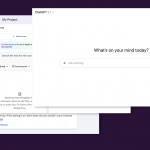
Data breaches and data leakage have become legal concerns companies must contend with the world over. The rise of data protection legislation such as the EU General Data Protection Regulation (GDPR) and the California Consumer Privacy Act (CCPA) have made the protection of personally identifiable information (PII) a mandatory requirement for companies of all sizes. Noncompliance can bring massive fines, reputational damage, and lost business.
Data Loss Prevention (DLP) solutions have emerged as essential tools in any comprehensive cybersecurity strategy, protecting sensitive data such as PII, intellectual property, and critical data from one of the biggest risks to data security: insider threats. Supporting data transparency efforts through data discovery and data classification features which identify and monitor sensitive information, DLP solutions can control data flow in real-time within the company network.
When applied on the endpoint, DLP solutions also ensure continuous data protection whether an employee is on-premises or working remotely and whether they are connected to the internet or not. Meanwhile, cloud access security brokers (CASB) and cloud DLP solutions address the risks associated with cloud storage and cloud apps.
Choosing the right DLP solution for a business, however, can sometimes be complicated. Organizations have different needs and budgets based on their size, and DLP often falls outside the scope of traditional cybersecurity tools such as antivirus software and firewalls. Dedicated DLP and integrated DLP solutions have emerged as two strategies companies can pursue in their quest to implement DLP tools on their networks.
What is Dedicated DLP?
Dedicated DLP solutions are standalone products specifically built and designed for Data Loss Prevention. They offer comprehensive tools and policies that allow companies to use predefined profiles for sensitive data and develop their own based on their needs. They offer protection for data at rest and in motion, content and contextual scanning capabilities based on regular expressions, DLP policies based on groups, device control, and, in some cases, encryption options. Certain solutions also come with specific policies that can be applied for regulatory compliance with specific legislation and international standards such as GDPR, HIPAA, or PCI DSS. Policy violations are logged, and reports that can be used for auditing purposes are generated.
Given their extensive tools and focus on compliance and data protection, many companies believe dedicated enterprise DLP solutions are the only option worth considering. And, in the case of big organizations, that is certainly true. The more extensive the network, the more data it stores and collects, which results in a higher financial and reputational risk for the company in case of a data breach. Therefore, complex tools are needed to effectively protect the sensitive data being stored and circulating within it.
However, dedicated DLP solutions can be problematic for smaller and medium-sized companies that do not need the full arsenal of DLP tools to protect their networks and often invest in dedicated DLP tools only to find that they have not used even half of their capabilities. This is where integrated DLP comes into play.
What is Integrated DLP?
Integrated DLP solutions are an extension of existing security tools that offer a stripped-down version of dedicated DLP solutions that maintain their key functionalities while eliminating the complexities needed for large-scale networks. They focus on policies built on regional and industry-specific templates, require no additional software or hardware installation, and are easy and quick to deploy. Most notably, they cost considerably less than a dedicated DLP solution and take little time to implement. The risk of integrated DLP is their limited customization options and reduced capabilities.
An integrated DLP approach can refer not only to a specific add-on of a particular security tool but to exploiting existing options within several security solutions to cover the basics of DLP. This means activating several a number of policies across several solutions and managing them without a centralized dashboard which can lead to a lack of cohesion and thus inevitable data protection strategy blind spots if strong security management policies are not put in place.
Towards a Flexible Approach to DLP
While it is true that the biggest dedicated DLP solutions on the market are built with big enterprises in mind, which can make them unsuitable for smaller and medium-sized organizations, a new category of DLP tools has been developed with a focus on flexibility, quick implementation and the aim to serve customers of all sizes.
Solutions like Endpoint Protector offer the possibility of mixing and matching functionalities, allowing organizations to eliminate superfluous tools. In this way, companies can cut costs while maintaining some of the key capabilities of dedicated DLP, such as highly customizable policies, centralized management, and separate policies based on groups or departments.
While smaller and medium-sized companies might be tempted to go for the most affordable DLP strategy, hoping that basic protection will be enough to ensure their data’s security, it’s worth considering that data breaches are the most dangerous to such organizations. With vulnerable reputations just beginning to develop and limited financial resources, 60% of small businesses fold within six months of a data breach.
Frequently Asked Questions
- What type of sensitive data is collected and stored by the company?
- Where does sensitive data reside and who has access to it?
- What operational resources does the company have in place?
- What channels (email, web, cloud apps etc.) need coverage?
Check out the top 7 reasons to start your DLP strategy with Endpoint Protector
Download our free ebook on
Data Loss Prevention Best Practices
Helping IT Managers, IT Administrators and data security staff understand the concept and purpose of DLP and how to easily implement it.
















